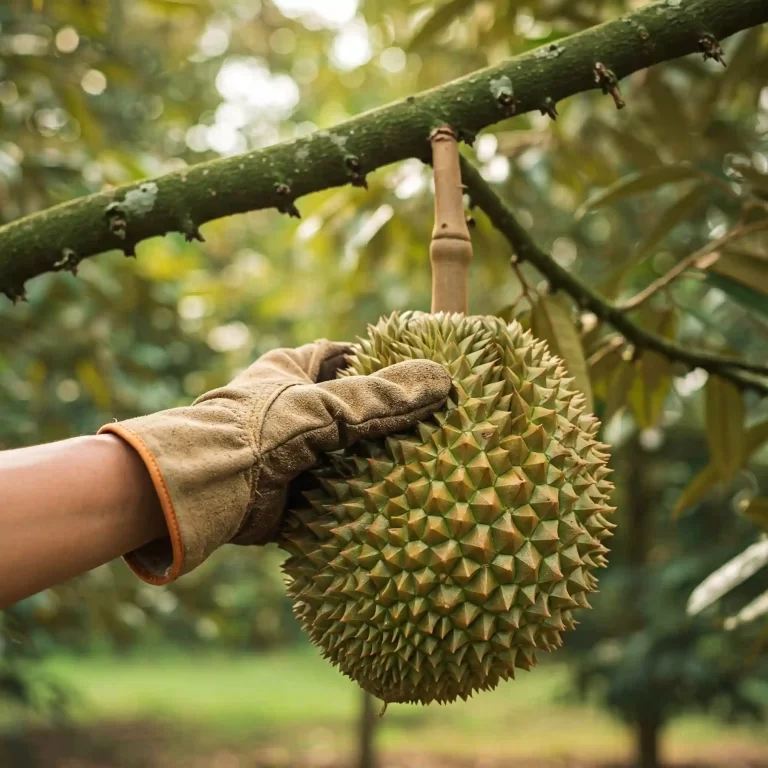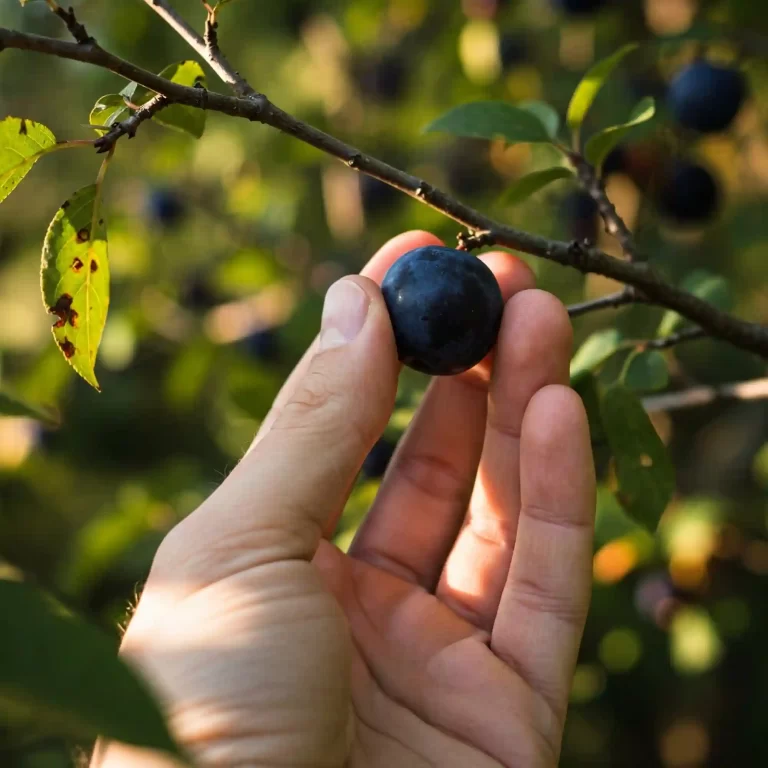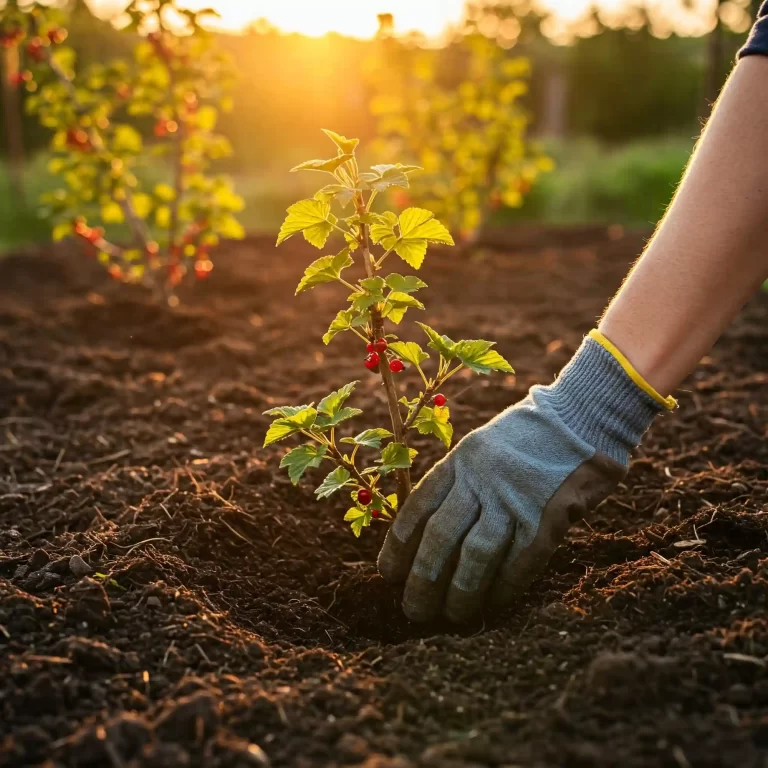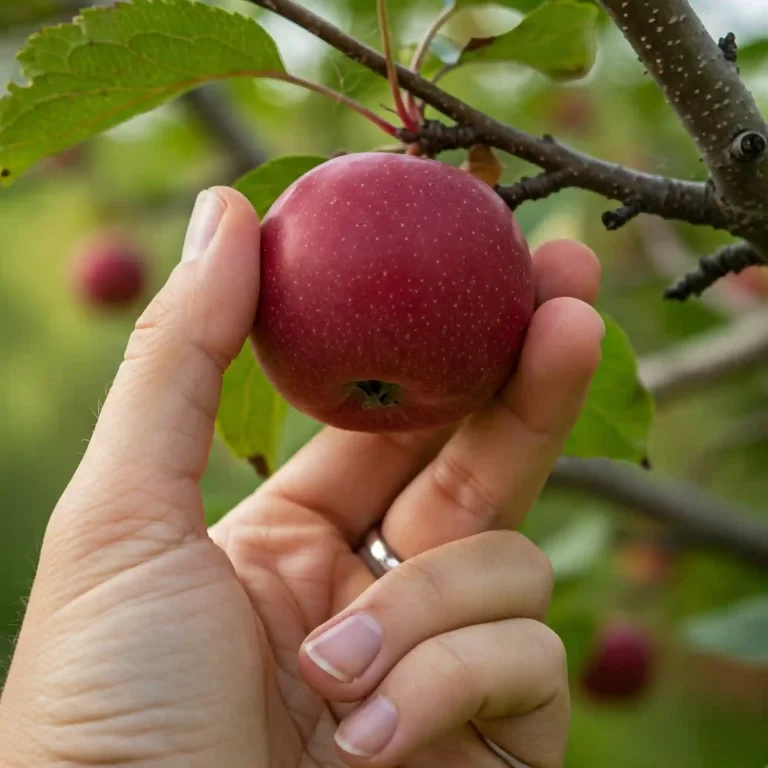| Key Takeaways |
| – Pomegranates are delicious and nutritious fruits that can also be grown as ornamental plants in your garden. |
| – You can grow your own pomegranate tree from seed by choosing and preparing fresh and ripe pomegranates, planting the seeds in pots or containers, caring for the seedlings and young plants, pruning and training the trees, and harvesting and storing the fruits. |
| – Growing pomegranate trees from seed is a rewarding and fun experience that can provide you with fresh and organic pomegranates for years to come. |
Introduction
Pomegranates are one of the oldest and most popular fruits in the world. They have been cultivated for thousands of years in many regions, such as Asia, Africa, Europe, and America. They are valued for their sweet and tangy taste, their rich color, and their numerous health benefits. Pomegranates are rich in antioxidants, vitamins, minerals, and fiber. They can help lower blood pressure, cholesterol, and inflammation, prevent infections, improve digestion, and protect against cancer.
Pomegranates are not only delicious and nutritious, but they are also beautiful and versatile. They can be eaten fresh, juiced, dried, canned, or made into jam. They can also be used as ingredients in salads, desserts, sauces, cocktails, and more. Pomegranates are also grown as ornamental plants in gardens and landscapes. They have attractive foliage, flowers, and fruits that can add color and charm to any space.
But did you know that you can grow your own pomegranate tree from seed? Yes, you can! Growing pomegranate trees from seed is a fun and rewarding way to enjoy this amazing fruit. You can start your own pomegranate tree from a seed that you get from a fresh and ripe pomegranate that you buy from the market or pick from your garden. You can plant the seed in a pot or container, care for it until it grows into a seedling and then a young plant, prune and train it to shape it into a tree, and harvest your own pomegranates when they are ready.
In this article, we will show you how to grow your own pomegranate tree from seed step by step. We will also give you some tips and tricks on how to choose and prepare the seeds, how to plant them in pots or containers, how to care for them as they grow, how to prune and train them for better growth and fruit production, and how to harvest and store them when they are ripe. By following this guide, you will be able to grow your own pomegranate tree from seed successfully and enjoy fresh and organic pomegranates for years to come.
How to Choose and Prepare Pomegranate Seeds for Planting
The first step to grow your own pomegranate tree from seed is to choose and prepare the seeds for planting. Here are some things you need to do:
- Choose fresh and ripe pomegranates. The quality of the seeds depends on the quality of the fruits. You want to choose pomegranates that are fresh, ripe , firm , heavy , and have a deep red or purple color . You can buy them from the market or pick them from your garden if you have an existing pomegranate tree . Avoid pomegranates that are soft , wrinkled , bruised , or have cracks or mold on them .
- Extract the seeds from the fruits. The seeds are located inside the arils , which are the juicy sacs that surround them . To extract the seeds , you need to cut the fruits open with a sharp knife , score them into quarters , peel off the skin , and separate the arils from the white membrane . You can do this over a bowl of water to make it easier . The arils will sink to the bottom while the membrane will float to the top .
- Clean and dry the seeds. The seeds are covered with a thin layer of pulp that needs to be removed before planting . To clean the seeds , you need to rinse them under running water and rub them gently with your fingers or a paper towel . To dry the seeds , you need to spread them on a paper towel or a cloth and let them air dry for a few hours or overnight .
- Stratify the seeds in a refrigerator. Stratification is a process that mimics the natural cold and moist conditions that the seeds need to break dormancy and germinate . To stratify the seeds , you need to place them in a plastic bag or a container with some moist peat moss, perlite, vermiculite, or sand . You need to seal the bag or container and label it with the date and the name of the seeds . You need to store the bag or container in the refrigerator for about four to six weeks .
- Optional: Enhance seed viability. There are some optional methods that you can use to enhance the viability of the seeds, which means their ability to germinate and grow . Some of these methods are:
- Soaking the seeds in water or hydrogen peroxide. This can help soften the seed coat and stimulate germination. You can soak the seeds in water for about 24 hours or in hydrogen peroxide for about an hour before planting them.
- Scarifying the seeds with sandpaper or a knife. This can help create small scratches or cuts on the seed coat and allow water and oxygen to enter. You can scarify the seeds by rubbing them gently with sandpaper or by making a small nick with a knife on one end of each seed before planting them.
How to Plant Pomegranate Seeds in Pots or Containers
The next step to grow your own pomegranate tree from seed is to plant the seeds in pots or containers. Here are some things you need to do:
- Choose suitable pots or containers. The pots or containers that you use for growing pomegranate seeds should be large enough to accommodate the root system of the plants, have drainage holes at the bottom, and have saucers to catch excess water. You can use clay pots, plastic pots, nursery trays, or any other containers that meet these criteria.
- Prepare the pots or containers with potting mix. The potting mix that you use for growing pomegranate seeds should be well-drained, fertile, and slightly acidic. You can use a ready-made potting mix that is suitable for fruit trees, or you can make your own by blending peat moss, perlite, vermiculite, and compost in equal parts. You need to fill the pots or containers with the potting mix up to about an inch below the rim.
- Sow the seeds in the pots or containers. The seeds should be sown about half an inch deep and spaced about two inches apart in each pot or container. You can use your finger or a pencil to make holes in the potting mix and drop one seed in each hole. You need to cover the seeds with a thin layer of potting mix or sand and press it lightly.
- Water the pots or containers lightly and evenly. The potting mix should be moist but not soggy. You can use a spray bottle or a watering can to water the pots or containers lightly and evenly until water drains out from the bottom. You need to avoid overwatering or underwatering the seeds as this can affect their germination and growth.
- Place the pots or containers in a warm and sunny location. The seeds need warmth and light to germinate and grow. You can place the pots or containers indoors near a sunny window, under artificial lights, or on a heating mat, or outdoors in a sheltered spot that receives at least six hours of direct sunlight per day. The ideal temperature range for germination is between 68°F and 86°F (20°C and 30°C).
How to Care for Pomegranate Seedlings and Young Plants
The third step to grow your own pomegranate tree from seed is to care for the seedlings and young plants as they grow. Here are some things you need to do:
- Monitor the germination of the seeds. The seeds should start to germinate within two to four weeks after planting, depending on the temperature and moisture level. You should see green shoots emerging from the potting mix. You need to keep an eye on them and make sure they are healthy and vigorous.
- Thin out or transplant the seedlings. The seedlings should be thinned out or transplanted once they have two sets of true leaves, which are different from the first pair of leaves that appear after germination. Thinning out means removing some of the weaker or excess seedlings from each pot or container to give more space and resources to the remaining ones
- Thin out or transplant the seedlings. The seedlings should be thinned out or transplanted once they have two sets of true leaves, which are different from the first pair of leaves that appear after germination. Thinning out means removing some of the weaker or excess seedlings from each pot or container to give more space and resources to the remaining ones. You can use scissors or a knife to cut off the unwanted seedlings at the soil level, or you can gently pull them out by hand. Transplanting means moving some of the seedlings to new pots or containers to give them more room to grow. You can use a spoon or a trowel to dig out the seedlings with their roots and soil intact, and transfer them to new pots or containers with fresh potting mix. You need to water the seedlings well after thinning out or transplanting them.
- Provide adequate water, light, temperature, and humidity for the seedlings and young plants. The seedlings and young plants need regular watering, bright light, warm temperature, and moderate humidity to grow well. You need to water them when the top inch of the potting mix feels dry to the touch, but not too often or too much as this can cause root rot or fungal diseases. You need to provide them with at least six to eight hours of direct sunlight per day, either indoors or outdoors, depending on the weather and season. You need to keep them in a temperature range of 50°F to 85°F (10°C to 29°C), and protect them from frost or extreme heat. You need to maintain a humidity level of 50% to 70%, and mist them occasionally with water to prevent them from drying out.
- Fertilize the seedlings and young plants with organic or synthetic fertilizers. The seedlings and young plants need regular feeding with organic or synthetic fertilizers to boost their growth and health. You can use an organic fertilizer such as compost, manure, worm castings, fish emulsion, seaweed extract, etc., or a synthetic fertilizer such as a balanced 10-10-10 formula, or a fruit tree specific formula such as 8-8-8 or 6-6-6. You need to apply the fertilizer according to the instructions on the label, usually once every two weeks during the growing season. You need to dilute the fertilizer with water and apply it around the base of the plants, avoiding direct contact with the leaves or stems.
- Protect the seedlings and young plants from pests and diseases. The seedlings and young plants are susceptible to various pests and diseases that can damage or kill them. Some of the common pests that attack pomegranate plants are aphids, scale insects, mealybugs, spider mites, etc., which suck the sap from the leaves and stems and cause yellowing, curling, wilting, or dropping of leaves. Some of the common diseases that affect pomegranate plants are leaf spot, root rot, fungal infections, etc., which cause brown spots, black spots, white patches, rotting, or decay on the leaves, roots, or fruits. You need to inspect your plants regularly for any signs of pests or diseases, and treat them promptly with natural or chemical remedies. Some of the natural remedies that you can use are neem oil, insecticidal soap, horticultural oil, baking soda, vinegar, etc., which can repel or kill the pests or fungi without harming your plants. Some of the chemical remedies that you can use are insecticides, fungicides, miticides , etc . , which can eliminate the pests or diseases effectively , but you need to follow the directions on the label carefully and wear protective gear when applying them .
How to Prune and Train Pomegranate Trees for Better Growth and Fruit Production
The fourth step to grow your own pomegranate tree from seed is to prune and train the trees for better growth and fruit production. Here are some things you need to do:
- Prune the trees in different stages of growth. Pruning is a process that involves cutting off some of the branches of the trees to improve their health, shape , size , and yield . Pruning is important for pomegranate trees as they tend to grow multiple stems from the base and produce many branches that can become crowded, tangled , or weak . Pruning can help remove dead, diseased , damaged , or crossing branches, encourage new growth, increase air circulation, light penetration, fruit quality, etc. . Pruning should be done in different stages of growth, such as:
- Seedling stage. This is when the plants are still young and have not yet produced any flowers or fruits. You need to prune the plants to select one or a few main stems that will form the trunk of the tree, and remove any suckers or unwanted stems that grow from the base or the roots. You also need to prune the plants to shape them into a bushy or a tree-like form, depending on your preference. You can do this by cutting off the tips of the branches to encourage branching, or by removing some of the lower branches to create a clear stem.
- Juvenile stage. This is when the plants have started to produce flowers and fruits, usually after two or three years of growth. You need to prune the plants to thin out some of the branches that are too dense, too long, or too weak, and leave about four to six branches per main stem. You also need to prune the plants to remove any flowers or fruits that appear on the lower branches, as they will reduce the quality and quantity of the fruits on the upper branches.
- Flowering stage. This is when the plants are in full bloom, usually in spring or summer. You need to prune the plants lightly to remove any dead, diseased, or damaged branches, and to shape them into a symmetrical and attractive form. You also need to prune the plants to remove any excess flowers that may reduce the size and sweetness of the fruits, leaving about one or two flowers per branch.
- Fruiting stage. This is when the plants are bearing fruits, usually in fall or winter. You need to prune the plants minimally to avoid damaging or dropping the fruits, and only remove any dead, diseased, or damaged branches that may affect the health of the tree. You also need to prune the plants to remove any fruits that are too small, too green, or too rotten, leaving only the ripe and healthy ones.
- Use suitable pruning tools and techniques. The pruning tools that you use for pomegranate trees should be sharp, clean, and appropriate for the size and type of the branches that you want to cut. You can use pruning shears for small and thin branches, loppers for medium and thick branches, saws for large and hard branches, secateurs for delicate and precise cuts, etc. You need to sterilize your tools with alcohol or bleach before and after each use to prevent spreading any pests or diseases. You also need to use proper pruning techniques for pomegranate trees, such as:
- Thinning cuts. These are cuts that remove an entire branch at its point of origin from another branch or from the trunk. These cuts are used to thin out some of the branches that are too dense, too long , or too weak , and leave more space and resources for the remaining ones .
- Heading cuts. These are cuts that remove only a part of a branch at its tip or along its length. These cuts are used to shape , shorten , or redirect a branch in a desired direction .
- Pinching cuts. These are cuts that remove only a small portion of a branch at its tip with your fingers or a pair of scissors. These cuts are used to encourage branching, flowering , or fruiting on a branch .
- Train the trees with methods and structures. Training is a process that involves bending, tying , or attaching some of the branches of the trees to different methods and structures to improve their shape, size, and yield . Training is optional for pomegranate trees as they can grow well without it, but it can be beneficial for some purposes, such as:
- Staking. This is a method that involves supporting a single main stem of a tree with a wooden stake, metal rod , bamboo pole , or other rigid material that is inserted into the ground next to it . Staking can help keep the tree upright, straight , and stable , especially when it is young , weak , or windy .
- Trellising. This is a method that involves attaching some of the branches of a tree horizontally along a wooden frame, metal wire , plastic netting , or other flexible material that is fixed on a wall, fence, pergola, etc. . Trellising can help save space, create shade, enhance beauty, and facilitate harvesting .
- Espaliering. This is a method that involves training some of the branches of a tree into a flat plane along a wall, fence, trellis, or other support. Espaliering can help create artistic and decorative patterns, such as fans, candelabras, cordons, etc. Espaliering can also help improve fruit quality and yield by exposing more branches to sunlight and air.
How to Harvest and Store Pomegranates from Your Own Tree
The final step to grow your own pomegranate tree from seed is to harvest and store the fruits from your own tree. Here are some things you need to do:
- Harvest the fruits when they are ripe. The fruits are ready to harvest when they have reached their full size, color, and weight, usually after six to seven months of growth. You can tell if the fruits are ripe by looking at their appearance, such as their deep red or purple color, their smooth and shiny skin, and their slight cracking at the calyx end. You can also tell by feeling their weight, which should be heavy and firm. You can also tell by tapping their skin, which should produce a metallic sound. You can also tell by tasting their juice, which should be sweet and tangy.
- Cut the fruits with a sharp knife or scissors. The fruits should be harvested by cutting them with a sharp knife or scissors at the stem end, leaving about an inch of stem attached to the fruit. You should avoid pulling or twisting the fruits as this can damage or bruise them. You should also wear gloves and aprons when harvesting the fruits as they can stain your skin and clothes with their juice.
- Store the fruits in a cool and dry place or in a refrigerator. The fruits can be stored in a cool and dry place, such as a cellar, pantry, or garage, for up to several weeks. They should be kept away from direct sunlight, heat, moisture, and pests. They should also be placed in a single layer on a tray or a basket to prevent them from touching each other and causing rotting or molding. The fruits can also be stored in a refrigerator for up to several months. They should be wrapped in plastic bags or containers to prevent them from drying out or losing flavor.
- Optional: Freeze, dry, can, juice, or make jam from the fruits. The fruits can also be preserved by freezing, drying, canning, juicing, or making jam from them. These methods can help extend the shelf life of the fruits and allow you to enjoy them throughout the year. Some of these methods are:
- Freezing. This is a method that involves removing the seeds from the fruits and placing them in freezer bags or containers. Freezing can help retain the flavor and color of the seeds for up to a year.
- Drying. This is a method that involves removing the seeds from the fruits and spreading them on a baking sheet or a dehydrator tray. Drying can help reduce the moisture content of the seeds and make them crunchy and chewy for up to six months.
- Canning. This is a method that involves removing the seeds from the fruits and cooking them with sugar, water, lemon juice, and spices in a large pot. Canning can help seal the seeds in glass jars with lids and make them soft and sweet for up to a year.
- Juicing. This is a method that involves removing the seeds from the fruits and blending them with water in a blender or a juicer. Juicing can help extract the juice from the seeds and make it refreshing and nutritious for up to a week.
- Making jam. This is a method that involves removing the seeds from the fruits and cooking them with sugar, pectin , lemon juice , and spices in a large pot . Making jam can help thicken the juice from the seeds and make it spreadable and delicious for up to six months .
Conclusion
Pomegranates are wonderful fruits that you can grow yourself from seed. By following this guide, you will be able to grow your own pomegranate tree from seed successfully and enjoy fresh and organic pomegranates for years to come.
Growing pomegranate trees from seed is not only rewarding but also fun. You will be able to witness the amazing process of germination, growth, flowering, fruiting, harvesting, storing, etc. . You will also be able to share your experience and feedback with us .
We hope you found this article helpful and informative. If you have any questions, comments, suggestions, etc. , please feel free to contact us through our website, email, social media, etc. . We would love to hear from you and help you with your gardening needs.
Thank you for reading and happy gardening!





[…] you love trees and want to grow more of them? Do you have a favorite tree that you want to clone or preserve? Do you want to save […]